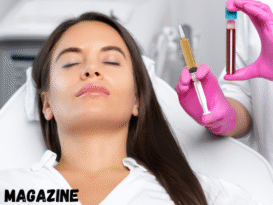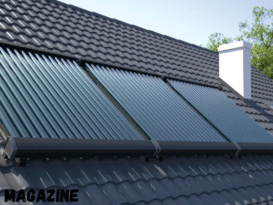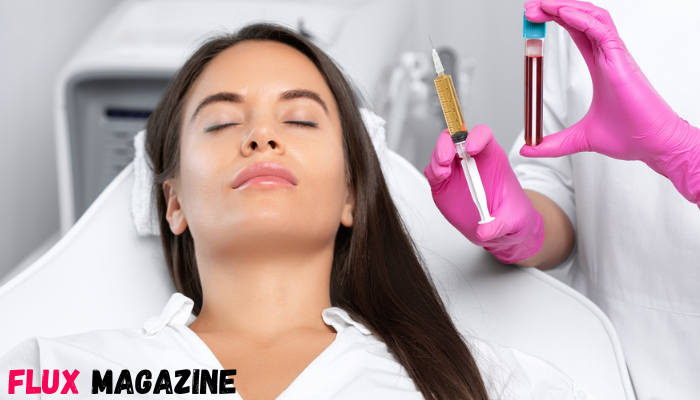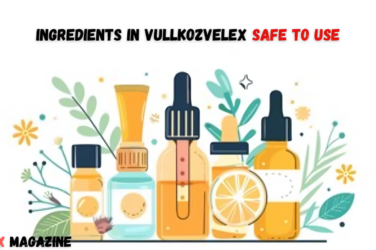Platelet-Rich Plasma ($\mathbf{PRP}$) treatment has rapidly grown in popularity across the UK, offering a cutting-edge, minimally invasive option for various medical and cosmetic concerns. From athletes recovering from injury to individuals seeking hair restoration or skin rejuvenation, PRP offers a natural way to harness your body’s own healing power. But what exactly is this treatment, and how does it achieve its impressive results? This post will break down the science, the process, and the applications of PRP.
Understanding the Basics: What is PRP?
$\mathbf{PRP}$ stands for Platelet-Rich Plasma. To understand it, we must first look at the components of your blood. Human blood is composed primarily of four elements: red blood cells, white blood cells, plasma, and platelets.
- Plasma: The liquid component of blood, primarily water, which carries all the other components.
- Platelets: These are tiny, disk-shaped cells vital for clotting. Crucially, they also contain hundreds of specialised proteins called growth factors and other bioactive molecules essential for initiating and accelerating tissue repair and regeneration.
In a normal blood sample, platelets are present at a concentration of about $150,000$ to $450,000$ per $\text{microlitre}$ $(\mu\text{L})$. Platelet-Rich Plasma is simply a concentration of platelets (and thus, growth factors) that is $\mathbf{5}$ to $\mathbf{10}$ times greater than what is normally found in the blood. This supercharged plasma is then used as a therapeutic tool.
The Science Behind the Success: How Does PRP Work?
The core mechanism of PRP treatment relies on the powerful regenerative properties of the concentrated growth factors contained within the platelets.
When PRP is injected into a target area, whether it’s an arthritic knee, a balding scalp, or wrinkled skin, the concentrated platelets become activated. Upon activation, they release a potent cocktail of these growth factors, including:
Platelet-Derived Growth Factor ($\mathbf{PDGF}$): Promotes cell growth and the formation of new blood vessels (angiogenesis).
Transforming Growth Factor Beta ($\mathbf{TGF}-\mathbf{\beta}$): Stimulates cell growth and collagen production.
Vascular Endothelial Growth Factor ($\mathbf{VEGF}$): Crucial for new blood vessel formation.
Epidermal Growth Factor ($\mathbf{EGF}$): Promotes skin cell growth and wound healing.
These growth factors trigger a cascade of biological responses:
- Stimulating Repair: They attract and stimulate reparative cells, such as stem cells, to the damaged area.
- Promoting Collagen: They significantly boost the production of collagen and elastin, essential for skin elasticity and structure.
- Enhancing Blood Supply: They encourage the formation of new capillaries, improving blood flow and nutrient delivery to the tissue.
Essentially, PRP acts as a powerful biological signal, telling the body to ramp up its natural healing and regenerative processes in the precise location where it is needed most.
The PRP Treatment Process: Step-by-Step
The procedure for receiving PRP treatment is straightforward, minimally invasive, and typically takes less than an hour. It involves three key steps:
1. Blood Collection (The Blood Draw)
A small amount of your own blood is drawn, similar to a standard blood test. The volume collected depends on the area being treated but is generally around $10$ to $60 \text{ml}$.
2. Centrifugation (The Concentration)
The collected blood is placed into a specialised device called a centrifuge. This process is crucial as it separates the blood into its constituent layers based on density:
- Red blood cells settle at the bottom.
- The clear plasma sits at the top.
- A thin layer, called the buffy coat, containing the highly concentrated platelets and white blood cells, forms between the two layers. This is the Platelet-Rich Plasma ($\mathbf{PRP}$) that will be used for treatment.
3. Injection (The Application)
The specialist carefully extracts the $\mathbf{PRP}$ and then administers it into the targeted area using fine needles. The specific technique varies by application:
For $\mathbf{skin}$ rejuvenation (often called the $\mathbf{Vampire}$ Facial or $\mathbf{PRP}$ microneedling), the PRP is injected superficially or applied topically following microneedling.
For hair restoration, it is injected directly into the scalp.
For orthopaedic conditions, it is injected into the injured joint, tendon, or ligament, often guided by ultrasound to ensure precision.
Key Applications of PRP Treatment
The versatility of PRP treatment means it is used across numerous medical specialities:
A. Orthopaedics and Sports Medicine
PRP is widely used to treat chronic tendon injuries, ligament sprains, and mild to moderate osteoarthritis. It is particularly effective for conditions like Achilles tendonitis, jumper’s knee (patellar tendonitis), and tennis elbow (lateral epicondylitis). Many people seeking PRP treatment London clinics offer often do so for these orthopaedic benefits.
B. Cosmetic and Aesthetic Medicine
Skin Rejuvenation: PRP is excellent for improving skin texture, reducing fine lines and wrinkles, shrinking pores, and reducing the appearance of acne scars. It stimulates long-term collagen production for a natural, youthful glow.
Hair Restoration: Injected into the scalp, PRP can stimulate dormant hair follicles, increase the hair growth phase, and improve hair density and thickness for those suffering from androgenic alopecia (pattern baldness).
C. Other Uses
PRP is also being explored and used in fields such as dentistry (to accelerate bone grafting), wound care (for slow-healing ulcers), and urology.
Why Choose PRP? The Key Advantages
The growing popularity of PRP treatment is rooted in its benefits:
Safety: Since the plasma is derived directly from the patient’s own blood (autologous), the risk of allergic reactions, disease transmission, or rejection is virtually eliminated.
Minimally Invasive: The procedure involves simple blood collection and injection, requiring little to no downtime.
Natural Healing: It harnesses the body’s natural regenerative abilities, promoting true tissue repair rather than just masking symptoms.
Versatility: Its wide range of applications makes it a powerful therapeutic tool for both aesthetic and medical concerns.
If you are considering a safe, natural, and effective way to address issues from chronic joint pain to hair loss, PRP treatment represents a compelling, modern option that works by tapping into your body’s inherent power to heal itself.


















Show Comments (0)